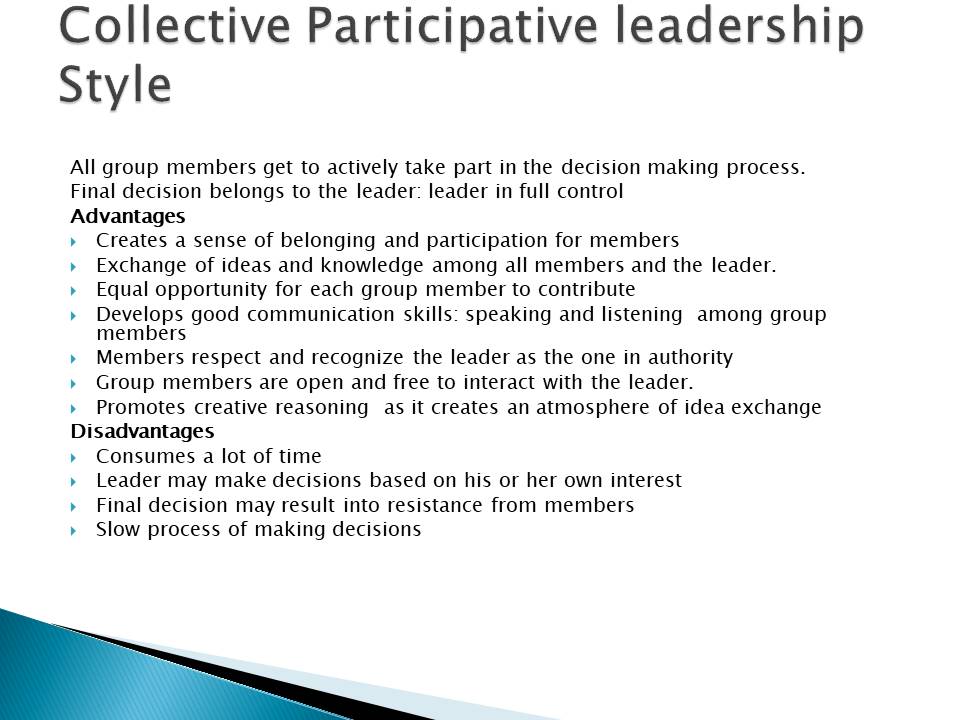Democratic Leadership
Where the leader in the group allows the members to make their own decisions. Final decision is hereby made based on the opinion by the majority.
Advantages
- Creates a positive working atmosphere for all members.
- Creates a sense of ownership for every group member.
- Develops good communication skills: speaking and listening among group members.
- Promotes team work and commitment to achieving set goals and in turn produces better results.
- Better decisions are made: Members get to exchange ideas and opinions as well as weigh out various options.
- Group members are open and free to interact with the leader.
- Promotes creative reasoning as it creates an atmosphere of idea exchange.
- Reduces resistance from group members in regards to a particular decision.
- Every member allowed a chance to contribute and develop.
- Higher production levels.
Disadvantages
- Wastage of time as members delegate over a decision or idea.
- Possibility of arguments and conflicts.
- Group members likely to undermine the leader’s position and authority.
- Group leader completely relies on members for decision making.
By allowing all group members to take part in decision making a leader creates an atmosphere whereby members are free to interact and open up their minds, raise their opinions and ideas. This by itself is a motivating factor for the group members and in turn increases team work and productivity.

Collective Participative leadership Style
All group members get to actively take part in the decision making process. Final decision belongs to the leader: leader in full control.
Advantages
- Creates a sense of belonging and participation for members.
- Exchange of ideas and knowledge among all members and the leader.
- Equal opportunity for each group member to contribute.
- Develops good communication skills: speaking and listening among group members.
- Members respect and recognize the leader as the one in authority.
- Group members are open and free to interact with the leader.
- Promotes creative reasoning as it creates an atmosphere of idea exchange.
Disadvantages
- Consumes a lot of time.
- Leader may make decisions based on his or her own interest.
- Final decision may result into resistance from members.
- Slow process of making decisions.
Collaborative and collective participative approach are similar in such a way that in both styles of leadership, team members get to actively take part in the decision making process, are allowed to raise out their various ideas and opinions and share out there different perspectives as well as experiences. The difference between these two styles however lies in the role of the leader in decision making. In collaborative style of leadership, decision is made based on the various contributions from the group members. The members hereby decide which decision is most appropriate. Here decision is mostly made based on the majority: high number of people with the same opinion.
